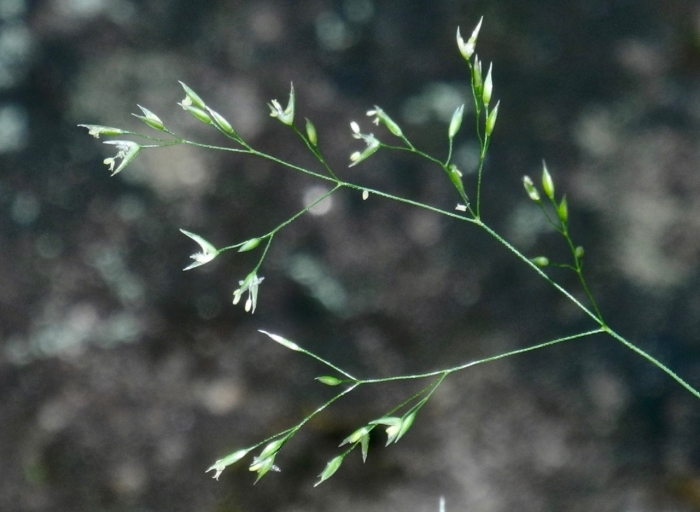Upland Bentgrass
(Agrostis perennans)
Upland Bentgrass (Agrostis perennans)
/
/

Michael J. Papay
CC BY 4.0
Image By:
Michael J. Papay
Recorded By:
Copyright:
CC BY 4.0
Copyright Notice:
Photo by: Michael J. Papay | License Type: CC BY 4.0 | License URL: http://creativecommons.org/licenses/by/4.0/ | Rights Holder: Michael J. Papay | Publisher: iNaturalist | Date Created: 2021-08-24T09:57:50-07:00 |







































Estimated Native Range
Summary
Agrostis perennans, commonly known as Upland Bentgrass, is a perennial grass that is semi-deciduous to evergreen, depending on the climate. It is native to a variety of habitats in the Americas, including open woodlands, meadows, and grassy slopes. This grass typically reaches a height of 0.5-3 feet (0.15-0.9 meters) and can spread to about 3 feet (0.9 meters) wide. Upland Bentgrass forms a fine-textured, dense tuft of foliage that is medium to dark green in color.
Upland Bentgrass is valued for its versatility and low maintenance in cultivation, making it suitable for use in naturalized areas, meadows, and as a ground cover in garden settings. It is also used for erosion control due to its dense growth habit. This grass prefers full sun but can tolerate light shade and requires consistent moisture, thriving in soils with medium to slow drainage. While it is adaptable to a range of soil types, it performs best in those that are fertile and well-aerated. Upland Bentgrass is not commonly afflicted by serious pests or diseases, but it can be susceptible to rust in humid conditions. It is also important to note that it may self-seed and spread, which should be considered when planting in smaller garden spaces or near natural areas.CC BY-SA 4.0
Upland Bentgrass is valued for its versatility and low maintenance in cultivation, making it suitable for use in naturalized areas, meadows, and as a ground cover in garden settings. It is also used for erosion control due to its dense growth habit. This grass prefers full sun but can tolerate light shade and requires consistent moisture, thriving in soils with medium to slow drainage. While it is adaptable to a range of soil types, it performs best in those that are fertile and well-aerated. Upland Bentgrass is not commonly afflicted by serious pests or diseases, but it can be susceptible to rust in humid conditions. It is also important to note that it may self-seed and spread, which should be considered when planting in smaller garden spaces or near natural areas.CC BY-SA 4.0
Plant Description
- Plant Type: Grass
- Height: 0.5-2.5 feet
- Width: 1-3 feet
- Growth Rate: Moderate
- Flower Color: N/A
- Flowering Season: Summer
- Leaf Retention: Semi-Deciduous
Growth Requirements
- Sun: Full Sun
- Water: High
- Drainage: Medium, Slow
Common Uses
Butterfly Garden, Deer Resistant, Edible*Disclaimer: Easyscape's listed plant edibility is for informational use. Always verify the safety and proper identification of any plant before consumption., Low Maintenance, Water Garden
Natural Habitat
Native to open woodlands, meadows, and grassy slopes
Other Names
Common Names: Autumn Bent, Autumn Bentgrass, Upland Bent, Agrostide Pérennante, Agrostis Pérennant
Scientific Names: , Agrostis perennans, Agrostis fasciculata, Agrostis perennans var. aestivalis, Agrostis elata, Agrostis perennans var. perennans, Agrostis altissima, Agrostis flavidula, Agrostis humboldtiana, Agrostis perennans var. elata
GBIF Accepted Name: Agrostis perennans (Walter) Tuck.